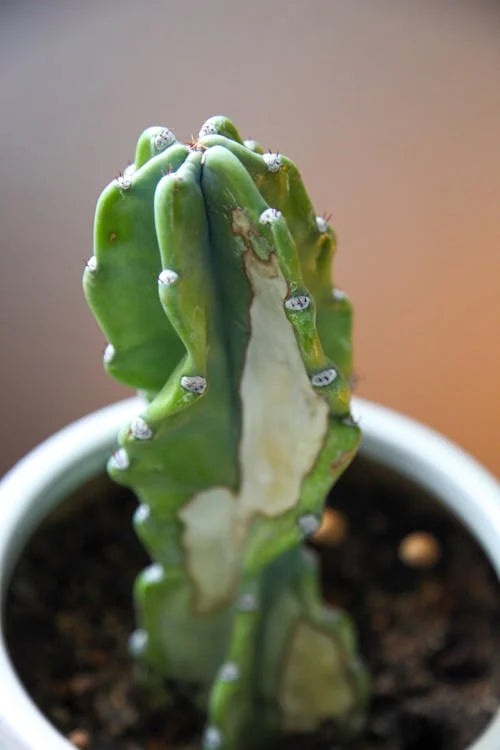
Background and history of Cereus peruvianus – Peruvian columnar cactus
Share
The Cereus peruvianus belongs to the cactus family Cactaceae and is an icon of desert flora. This impressive plant is native to the dry regions of South America, where it has adapted to extreme conditions such as intense heat and a lack of water. Thanks to its ability to store water in its thick, succulent stem, the Peruvian columnar cactus can survive for months without rain.
Its Latin name, “Cereus,” means “candle” and refers to its upright, cylindrical growth. In its natural habitat, the Cereus peruvianus can grow to a height of ten meters. As a houseplant, it is usually limited to a height of two to three meters, but even that makes it an impressive addition to any room.
A special feature of this cactus is its nocturnal blooming. In the wild, the Peruvian Columnar Cactus produces beautiful, large flowers that only open at night. These flowers attract bats and moths for pollination. Unfortunately, the cactus rarely blooms indoors, but its sculptural shape and sturdy presence make it a perennial favorite.
The Cereus peruvianus is often associated with strength and endurance, due to its robust nature and adaptability. In some cultures, it is even considered a symbol of protection and stability. With its rich history, easy care, and timeless beauty, the Peruvian Columnar Cactus is a must-have for cactus lovers and a beautiful addition to any plant collection.
